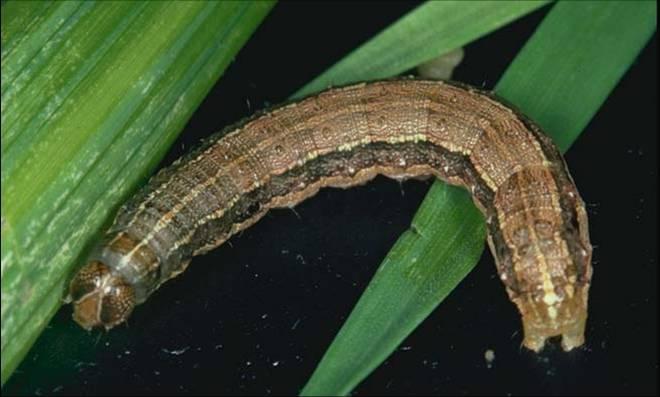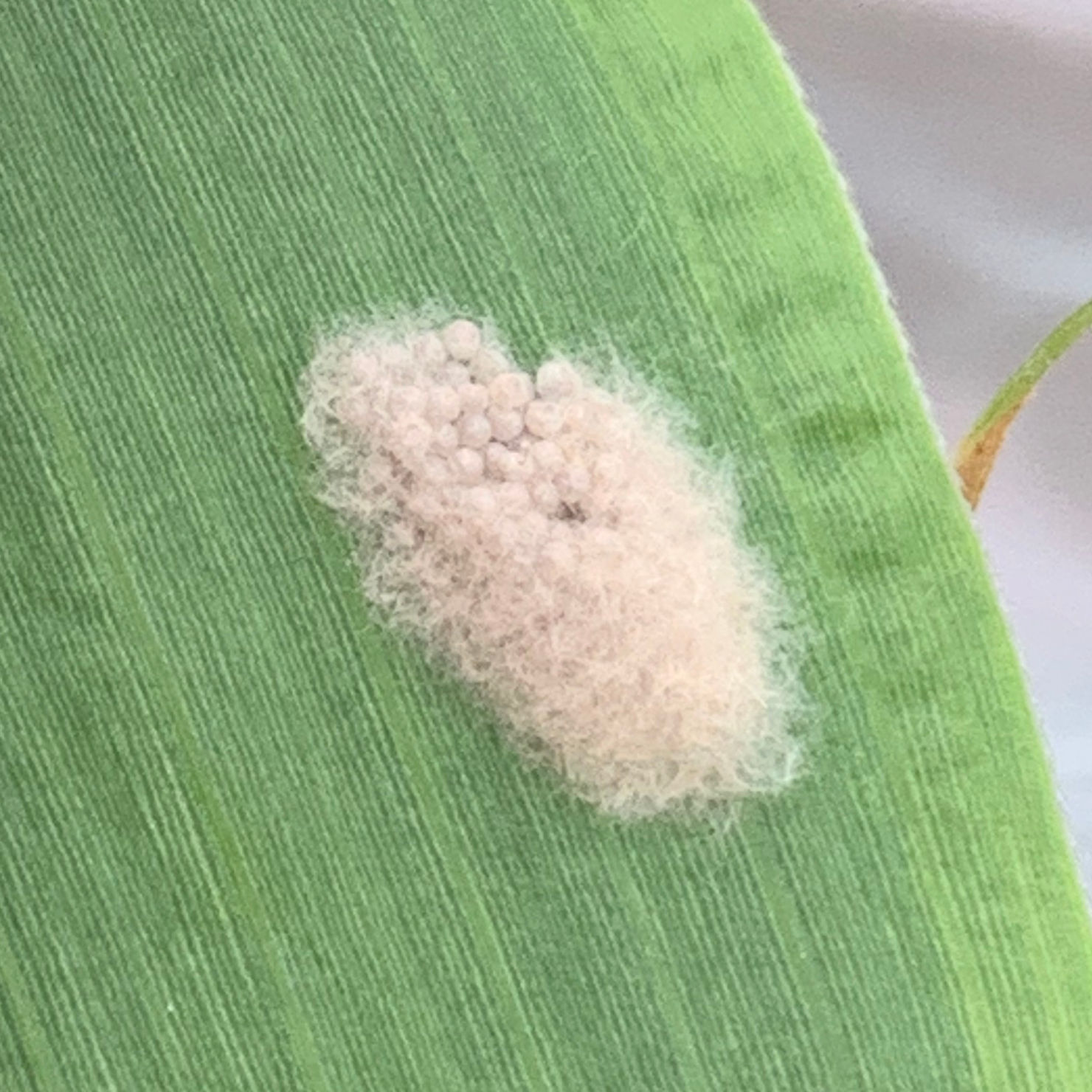Fall Armyworm
Spodoptera frugiperda
 Adult moth. |
Fall armyworm egg mass. |
 Late instar larva showing distinctive net pattern and inverted 'Y' on head. |
This moth is an annual pest from southern states, laying its eggs on corn, sorghum and other summer crops. There are normally two generations per year in Kansas, and damage to sorghum may occur anytime from July to the first frost. Feeding by the first generation typically occurs during whorl stage, causing large, irregular perforations in the foliage that are evident as leaves unfold, giving the plant a ragged appearance. This damage is rarely of economic importance, although late-planted fields may suffer stand reduction if heavily attacked while plants are still small. Leaf damage has little effect on yield, and larvae feeding within the whorl are protected from exposure to insecticides, making control difficult at this stage. Do not consider treatment unless 75 percent of plants show fresh damage and there are one or two live larvae per plant. Economic damage can be more serious when second generation larvae infest developing panicles at heading. Head infestations by fall armyworm and mixed infestations with corn earworm can be assessed the same as for corn earworm.
Please refer to the most recent version of the Sorghum Insect Management Guide for specific control recommendations.
Page last updated on 10/16/2013 by J.P. Michaud.
